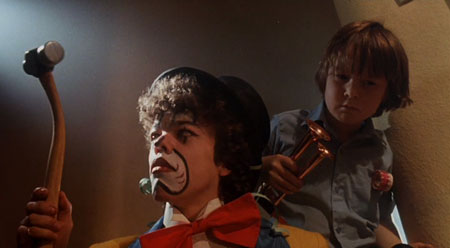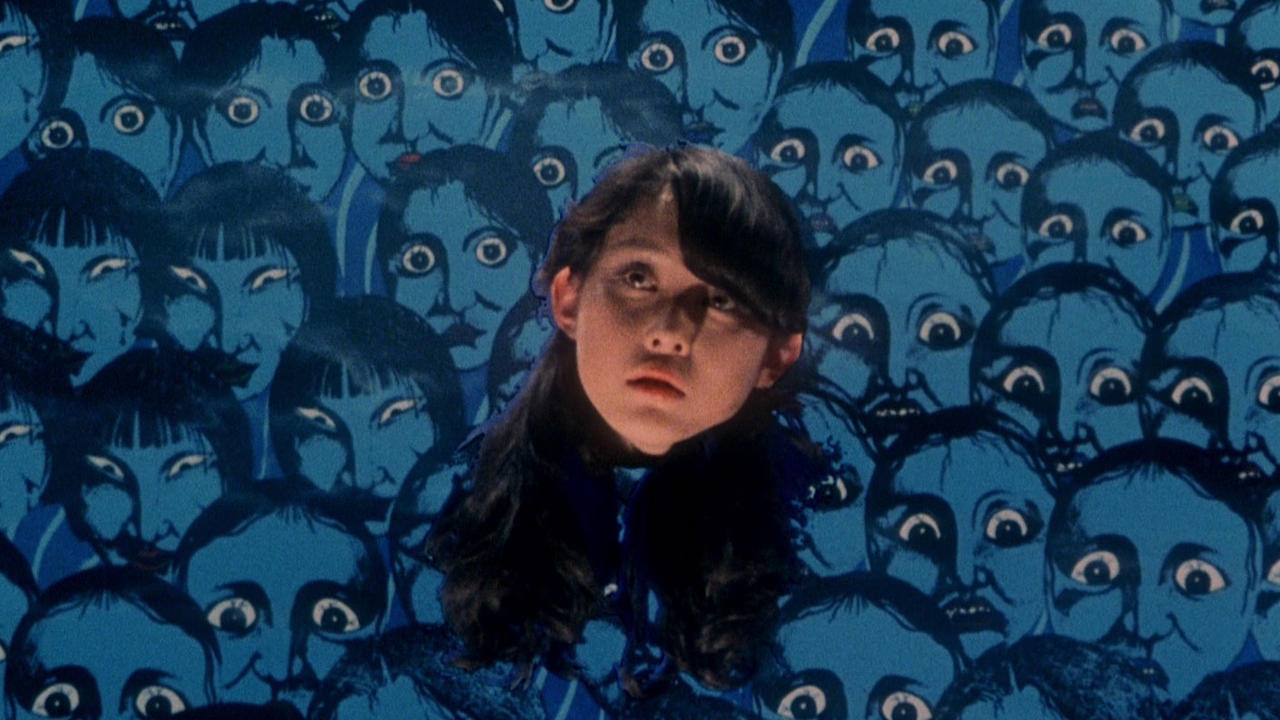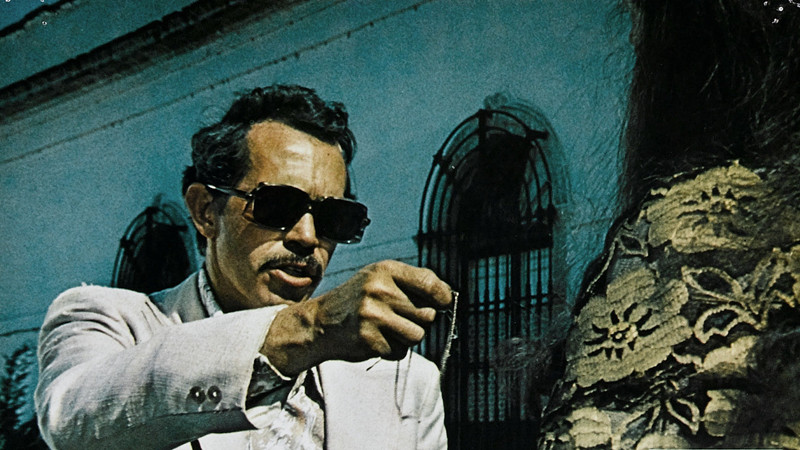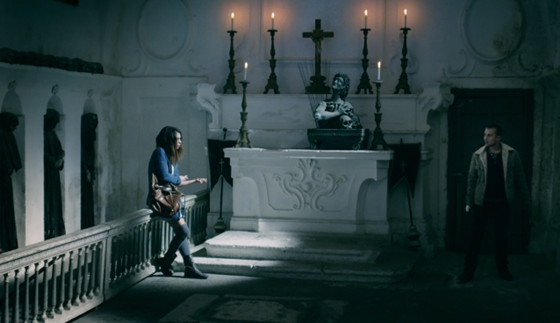
You have your ‘cult’ movie followings where enraptured viewers ‘abide by the dude’ or join each other in a form of congregation to throw spoons at the cinema screen for Tommy Wiseau’s The Room.
The cult where an initially dismissed (whether critically or commercially – or more likely both) film finds a new lease of life later down the years after it hits home video, where convention-goers get their chance to celebrate their love for Evil Dead by cosplaying as the boomstick-toting, chainsaw-appendaged Ash Williams. But there is the cult that has yet to cement itself into the pop-culture zeitgeist, whether this be that a large enough group has yet to discover them or perhaps they are right in place existing on the fringes of cult (it just wouldn’t be right to see people cosplaying as ‘shunters’ from Society).
Nevertheless, the bizarre and bewildering films on this list do have their passionate followings, they just may be smaller than your standard Donnie Darko’s, or of the lesser variety, your Showgirls. It’s not to mean that these are all undiscovered classics or particularly well-made films, rather these are diamonds (all right, fake diamonds) in the rough that deserve to be rediscovered by more fans so that maybe, just one day, these too can have an auditorium-filling future.
1. Xtro (1982, Harry Bromley Davenport)

Youtube channel, Red Letter Media, likely did this British sci-fi horror its biggest favour by plucking Xtro out of what would’ve been complete obscurity had it not been for their Best of the Worst series. With RLM expecting to be viewing dumpster-fire level of trash, only to instead be treated to a balls-to-the-wall barrage of equal parts body horror, abstract surrealism and a surprisingly effective domestic drama about a dysfunctional family, only with an alien dad.
After his father, Sam’s mysterious disappearance three years ago, young Tony (played by a child actor who gets increasingly fatter as the film continues) believes that his father has not left him and his mother intentionally and will one day return to his family, despite the mother now starting a relationship with another man. Tony is right, however, when his father returns to Earth after having been abducted by aliens to their home planet, mutated into one of them to survive their planet’s environment, and now aims to take Tony back with him.
When Sam initially returns to his home planet, he is in the form of a rubbery-looking dog-like being that impregnates the nearest human (think Alien’s facehuggers only with more blatant sexual semiotics), only to die and then be birthed out in full adult form the same as he was the day he left Earth.
It’s a scene that plays out exactly as you’d expect when picturing a fully-grown man crawl out of a woman as she’s torn apart, and that’s not even the strangest part. Other aspects of pure weirdness that is Xtro include Tony’s pet snake that is referred to as a male and named Harry yet lays eggs (the blu ray documentary reveals that the crew accidentally killed the first snake that played Harry during filming).
Sam bestows Tony with unexplained alien abilities such as bringing to life his own toys; these include a clown played by a dwarf that aids them in their nefarious deeds and a plastic soldier now human-sized that kills their downstairs neighbour. Not forgetting the inexplicable inclusion of a black panther found in the family’s apartment towards the finale that was only there due to a request from an American producer.
There are many more oddities to be found in Xtro that all come together unexpectedly to create a rather great movie, one that has all the ingredients to fail yet only brings charm with it. The director followed this up with two sequels-in-name-only (and potentially a fourth entry, though let’s hope not after seeing some of the test footage on the recently released blu ray’s extra features). The less said about them the better.
2. Hausu aka House (1977, Nobuhiko Obayashi)

So early on in the list and already in full insanity-level mode for these films, but this Japanese horror/comedy/teen melodrama/art piece/absurdist is a unique and essential entry into any of its genres.
Not to be confused with the 1986 film of the same name that also features a haunted-house yet couldn’t be more polar-opposite in terms of style and approach, House features the character of Angel (although in other translations she is named Gorgeous) who takes her six friends, all named after their signature abilities and attributes (you have the arse kicking Kung-Fu, the intellectual Prof, etc.), to stay at her Auntie’s mansion. Only for her Auntie to be a vengeful spirit unable to accept her husband’s death in the war and now uses the house to devour the girls.
It plays out as if Tim & Eric went back in time to Japan, dropped a load of DMT and decided to make a horror film influenced by both Looney Toons and The Haunting. Particular highlights include the music loving Melody being chewed up by the house’s grand piano and the girls’ teacher being turned into bunches of bananas.
It’s unhinged lunacy that is so wild in its set pieces and visuals, yet for the most part, still manages to communicate a somewhat coherent narrative of grief, fear and survival where these girls must utilise their distinct and name-given talents (although the character of Mac’s – short for stomach – talent of eating things is largely useless and is dispatched almost immediately) in order to survive Auntie’s man-eating house.
3. Bring me the Head of Alfredo Garcia (1974, Sam Peckinpah)

The most mainstream and accessible film found on this list, yet just as vastly underappreciated, especially when considering its pedigree with a notable director such as Peckinpah. The impeccable Warren Oates portrays Bennie, a sleazy and morally-dubious bar owner residing in Mexico who catches wind of a Mexican crime lord placing a bounty on the titular Alfredo who has impregnated his daughter.
The one thing Bennie knows that all the competing hitmen, bounty hunters and other reprehensible types don’t is that Alfredo died in a drunken car accident the previous week, prompting Bennie to take a road trip with his girlfriend, Elita (with whom the womanising Alfredo was also having an affair), to claim the corpse’s head and be in for an easy pay out. Only for this seemingly simple endeavour quickly turning to violence, betrayal and sorrow where greed leads only to misfortune.
Initially released to scathing critical reviews with many detesting the mean-spirited nature of Peckinpah’s melancholic and savage neo-western, it’s faced more positive reassessments over recent times and especially when viewing its narrative of a journey of self-destruction with modern eyes, is made all the more real and effective when aware that the two men who made this movie (the one behind the camera, and the one in front) were both on a similarly tragic path of shortened lives.
Bring me the Head is the only film Peckinpah was allowed final cut on, with all his other features released as studio edits, resulting in this being essential for both fans of the director and 70’s American cinema, when film was at its most raw and nihilistic.
4. Hardware (1990, Richard Stanley)

Unfortunately, the South African born Stanley is a director who has faded into the ether with only two films under his belt, the last being 1992’s folktale horror Dust Devil and is more famous for the numerous film projects he didn’t get made. He would’ve been elevated into the mainstream had it not been his firing just two days into production of the doomed 1996 adaptation of The Island of Dr Moreau, but at least he was able to make his debut in the cyberpunk sci-fi Hardware.
Featuring cameos from rock legends Lemmy and Iggy Pop, Hardware is set in a derelict future wasteland where the remains of a robot uncovered in the desert fall into the hands of Dylan McDermott’s Moses who decides to gift it to his sculptor girlfriend for her next art-piece. What the robot happens to be is a decommissioned model built by the government for human genocide, named the M.A.R.K 13 (taken from the Bible passage “No flesh shall be spared”), and has brought itself back online with intentions to fulfil its prime objectives.
Despite the film carrying a meagre budget of $1.5 m and being mainly set in a single apartment, Stanley demonstrates his ability to deliver ambitious large-scale storytelling and world-building, setting up a much more epic scope than it initially appears with an ending promising a bigger and better sequel that sadly never came to fruition.
Taking inspiration from 2000AD comics, Hardware sports fantastic visual design across the board ranging from the industrial cityscape and the rampaging robot, which by its hands, performs some of the most creative and grisly kills found in the genre with incredible practical effects to boot.
Continuing legal issues and disputes have held up the availability for Hardware, an undeserving fate and one that provides a glimpse into the talent of what Stanley could’ve been to the industry, making the enjoyment for the film that much more bittersweet.
5. Spring (2014, Justin Benson & Aaron Moorhead)

By far the most modern entry on this list and one that should’ve been applauded by cult genre fans on its release yet flew well below the radar for many to notice. More so a Lovecraftian love story than the horror that its promotional material suggests, Spring stars Lou Taylor Pucci who delivers such an incredibly endearing and genuine performance as the grief-stricken Evan as he travels to Italy following his mother’s death only to fall in love with Louise, a local beauty who might not be exactly human.
Co-directors Benson & Moorhead, whose other two efforts of their fledgling careers – Resolution and The Endless – also arguably deserve places on this list, craft an unexpectedly touching romance of forbidden lovers and seamlessly mixes it with the what would be impossible combination of monster movie as Louise struggles to hide from Evan her true identity as she begins to lose control of her body.
Tentacles and other slimy creature-feature conventions aside, Spring works just as effectively without the supernatural, with credit lying solely with the chemistry of the two leads, who genuinely convey that that they want this unorthodox relationship to thrive despite the danger she could pose for Evan.
The film also deserves recognition for being one of the few to accurately represent British tourists with the two men Evan meets up with early on and travels with in the first act, a depiction impossible to describe that must be seen in motion.